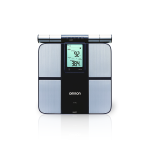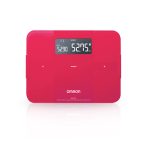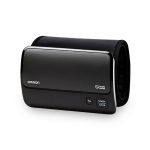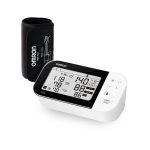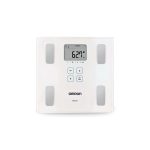Detecting and Diagnosing Arrhythmias: Tests and Monitoring Techniques
June 22, 2023 2023-12-08 16:30Detecting and Diagnosing Arrhythmias: Tests and Monitoring Techniques
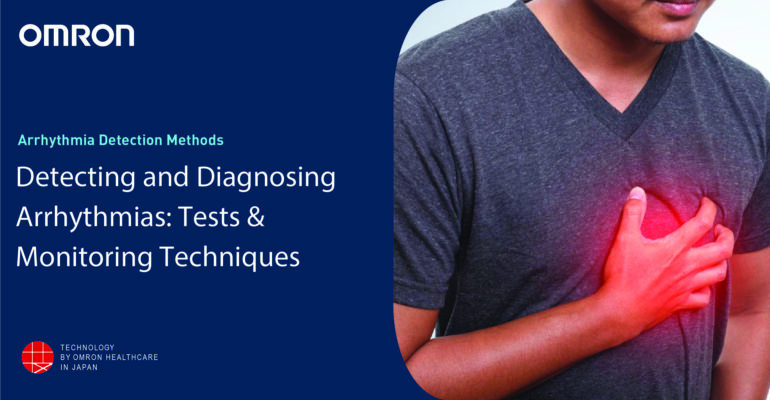
Detecting and Diagnosing Arrhythmias: Tests and Monitoring Techniques
Arrhythmias are abnormal heart rhythms that can range from harmless to life-threatening. These irregularities in the heart’s electrical system can have significant implications for an individual’s health. Prompt and accurate diagnosis is essential for effectively managing and treating these conditions. In this blog, we will discuss various tests and monitoring techniques used to detect and diagnose arrhythmias, providing insights into their purpose and significance.
Types of Arrhythmias:
- Atrial Fibrillation (AFib): AFib is the most common type of arrhythmia. It occurs when the heart’s upper chambers (atria) beat irregularly and rapidly. AFib can increase the risk of blood clots, stroke, and heart failure.
- Ventricular Tachycardia (VT): VT is a rapid heartbeat originating from the heart’s lower chambers (ventricles). It can lead to fainting, dizziness, and, in severe cases, ventricular fibrillation, a life-threatening arrhythmia.
- Supraventricular Tachycardia (SVT): SVT refers to rapid heart rates originating above the ventricles. It may cause palpitations, shortness of breath, and chest discomfort.
- Bradycardia: Bradycardia is a slow heart rate, typically below 60 beats per minute. It can result in fatigue, dizziness, and fainting.
- Premature Ventricular Contractions (PVCs): PVCs are extra, abnormal ventricle heartbeats. They may be harmless or indicate an underlying heart condition.
What is the importance of tests and monitoring arrhythmias?
Tests and monitoring techniques are crucial for arrhythmia detection and management due to the following reasons:
- Accurate Diagnosis: Tests like ECGs, ambulatory monitors, and stress tests aid in accurately diagnosing and classifying arrhythmias, providing essential information about the heart’s electrical activity.
- Treatment Planning: Knowing the specific type and characteristics of an arrhythmia is vital for developing an effective treatment plan, including medications, lifestyle modifications, or invasive procedures.
- Risk Assessment: Continuous monitoring using ambulatory devices helps identify arrhythmia patterns, frequency, and duration, enabling healthcare professionals to assess the risk of complications like blood clots or stroke.
- Monitoring Treatment Efficacy: Regular monitoring allows healthcare providers to evaluate the effectiveness of prescribed treatments, making adjustments as necessary to optimize patient outcomes.
- Long-Term Management: Arrhythmias often require ongoing management to prevent recurrences and minimize complications. Regular monitoring and follow-up visits help track the progression of the arrhythmia, adjust treatment plans, and address emerging issues promptly.
- Lifestyle Guidance: Tests and monitoring help identify triggers and underlying conditions contributing to arrhythmias, allowing healthcare professionals to provide tailored lifestyle guidance, such as exercise recommendations, stress management techniques, and dietary adjustments.
Tests and monitoring techniques for arrhythmia detection and management:
- Electrocardiogram (ECG or EKG): The electrocardiogram is a widely used test for diagnosing arrhythmias. It records the heart’s electrical activity through electrodes placed on the chest, arms, and legs. This non-invasive test visually represents the heart’s electrical impulses, allowing healthcare professionals to identify abnormal rhythms and patterns.
- Blood Tests: Blood tests may be conducted to measure electrolyte levels, such as potassium, calcium, and magnesium. Imbalances in these electrolytes can contribute to arrhythmias. Additionally, certain genetic conditions can be detected through blood tests, providing insights into potential underlying causes of arrhythmias.
- Ambulatory Monitors: Ambulatory monitors, including Holter and event monitors, are portable devices used to monitor the heart’s electrical activity over an extended period. Holter monitors record the heart’s activity continuously for 24 to 48 hours, while event monitors are worn for weeks or months and can be activated by the patient when symptoms occur. These monitors help capture intermittent arrhythmias that may not be evident during a routine ECG.
- Stress Test: A stress test, also known as an exercise or treadmill test, evaluates the heart’s response to physical exertion. During this test, the patient walks on a treadmill or cycles on a stationary bike while being monitored by an ECG. It helps identify arrhythmias that may only occur during exercise, providing valuable information for diagnosis and treatment planning.
- Echocardiogram: An echocardiogram is an ultrasound-based test that provides detailed images of the heart’s structure and function. It helps evaluate the heart’s pumping ability, assess the overall health of the cardiac muscle, and detect structural abnormalities that can contribute to arrhythmias. This non-invasive procedure uses sound waves to create real-time images of the heart, assisting in diagnosing and evaluating arrhythmias.
- Cardiac Catheterization: Cardiac catheterization involves inserting a thin, flexible tube (catheter) into a blood vessel and guiding it to the heart. This invasive procedure allows for measuring pressures within the heart chambers and the visualization of the coronary arteries. It can help identify blockages or abnormalities that may be causing arrhythmias and assists in planning appropriate treatment strategies.
- Electrophysiology Study (EPS): An electrophysiology study is an invasive procedure performed in a specialized cardiac laboratory. Thin, flexible catheters are inserted into the heart to evaluate the electrical system directly. EPS helps identify the location and mechanism of arrhythmias and guides the selection of treatment options, including catheter ablation or device implantation, such as pacemakers.
- Tilt Table Test: A tilt table test assesses the causes of fainting or near-fainting episodes. During the test, the patient lies on a table gradually tilted upright. Changes in heart rate and blood pressure are monitored to detect abnormal responses. This test can help diagnose certain types of arrhythmias, such as vasovagal syncope or neurocardiogenic syncope.
- Computed Tomography (CT) and Heart MRI (Magnetic Resonance Imaging): CT and MRI scans may be utilized to evaluate the heart’s structure and identify any abnormalities that could contribute to arrhythmias. These imaging techniques provide detailed pictures of the heart, allowing healthcare professionals to assess its size, shape, and overall function.
Omron Complete is a clinically validated blood pressure monitor with built-in EKG technology for convenient at-home monitoring of blood pressure and recording EKG readings. By using the free OMRON Connect app on a smartphone, individuals can access the EKG feature, store unlimited heart health data, and track their progress over time. This integrated approach combines blood pressure and EKG monitoring, providing a comprehensive solution for detecting and managing arrhythmias.
Conclusion:
Arrhythmias encompass a range of irregular heart rhythms that require accurate diagnosis and appropriate management. Tests and monitoring techniques are vital in detecting and classifying arrhythmias, assessing their severity, and guiding treatment decisions. Regular monitoring not only aids in optimizing treatment outcomes but also helps in long-term management, risk assessment, and lifestyle modifications.
Reference:
- https://www.mayoclinic.org/diseases-conditions/heart-arrhythmia/diagnosis-treatment/drc-20350674
- https://my.clevelandclinic.org/health/diseases/16749-arrhythmia
- https://www.ncbi.nlm.nih.gov/pmc/articles/PMC9683599/
- https://www.heart.org/en/health-topics/arrhythmia/symptoms-diagnosis–monitoring-of-arrhythmia/common-tests-for-arrhythmia
- https://www.mayoclinic.org/diseases-conditions/heart-arrhythmia/diagnosis-treatment/drc-20350674
- https://www.omronbrandshop.com/omron-complete/

